what makes the 3d ps1 games look so terrible?
psone graphics question
This topic is locked from further discussion.
The same Reason N64 3d games look terrible. Bad texture support.luckykoopsie
what makes the 3d ps1 games look so terrible?
[QUOTE="luckykoopsie"]The same Reason N64 3d games look terrible. Bad texture support.
what makes the 3d ps1 games look so terrible?Jakandsigz
,3d n64 games look so much better than the 3d psone games. i can only play 2d ps1 games.
The same Reason N64 3d games look terrible. Bad texture support.[QUOTE="Jakandsigz"][QUOTE="luckykoopsie"]
what makes the 3d ps1 games look so terrible?luckykoopsie
,3d n64 games look so much better than the 3d psone games. i can only play 2d ps1 games.
I see the problem here. You've been playing Bubsy 3D haven't you?
Yeah well, they look terrible NOW, but back then when it was a new it was the greatest thing ever, being able to play better than "arcade perfect" ports of Tekken, Soul Blade and Time Crisis at home was no laughing matter.
But sure the 3D graphics of the PS1 era have not aged well because of the low polygon count and use of low res textures in a machine that lack any kind of significant visual filters and shaders as current 3D graphic possess. Also back then developers where starting to get into 3D so there wasn't that huge field of experienced developers working on real time 3D graphics. The best 3D that could be seen back then was the one used for animation and even then it took weeks for computers to render just a few minutes of animation:
This is the best 1994 pre rendered 3D animation could offer: http://www.youtube.com/watch?v=WslSzQydnNs
Which pretty much 6 years later a PS2 could pull off real time so getting a PS1 that back in 1994 which could pull off arcade level graphics was kinda impressive.SciFiCat
Actually, the PS1 didn't come anywhere near arcade quality 3D graphics. At best, it was able to match low-end arcade hardware at the time, like the Namco System 11 (essentially a PS1 with twice as much VRAM) or Sega STV (essentially a Saturn), but it didn't come anywhere near high-end 1993 arcade hardware like the Sega Model 2, Namco System 22, or Namco Magic Edge... Those arcade systems were even able to pull off real-time 3D graphics almost approaching the quality of the pre-rendered animation you just posted...
http://gamespot.com/forums/topic/29361008/evolution-of-video-game-graphics?page=1
Daytona USA (1993)

Namco Magic Edge Hornet Simulator (1993)

Cyber Commando (1994)

Virtua Fighter 2 (1994)
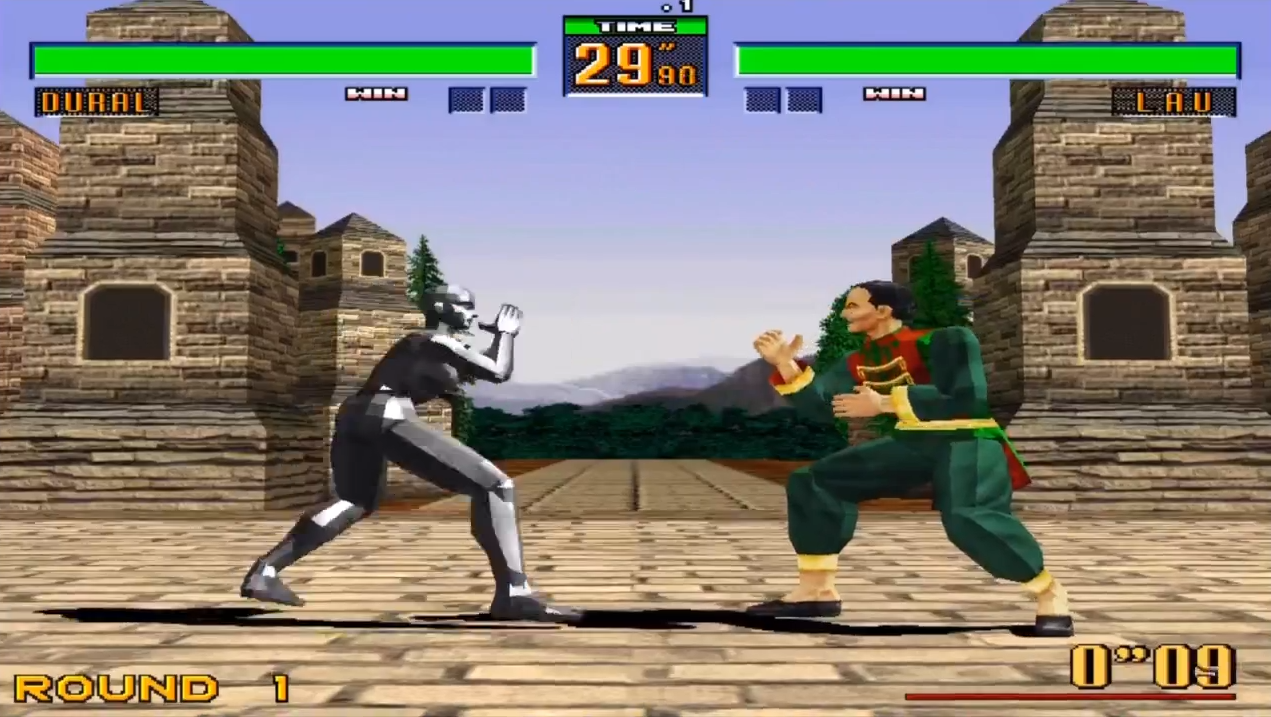
Sega Rally (1995)

Rave Racer (1995)

Fighting Vipers (1995)

Because Sony wasted their money with CD technology instead of powerful hardware.
Vagrant Story (probably the best looking game on the system, technically)

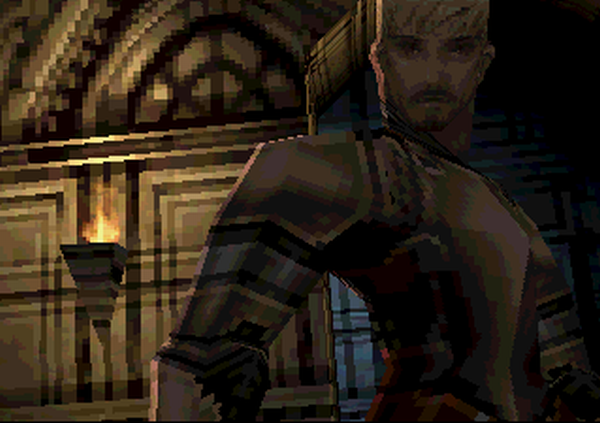
Compare this to Duke Nukem

Can can anyone explain me how in god's sake pixelated PS1 textures are "better" than blurry N64 textures?
The lower the resolution, the larger textures are shown by area. In other words, billinear filtering is ESSENTIAL on low resolutions, and so does Edge Anti Aliasing. If not, then you have the graphics as shown on the VG Story pics above. A simply perspective correction is not available, caused (to my knowledge) texture distortion. Moving polygons, caused by the lack of Z buffering. Also polygon flickering, randomly appearing objects, reloading textures and strange stuff where I can't even explain what it is... And ironically, I believe how the simply architecture of the system didn't allowed programmers to push something out of the hardware... At the end result, a technically gap between early and late games wasn't that much. When I look at N64, PS2, XBOX... the graphics on late games are far superior than anything else. On PS1, everything looks like the same, more or less, in my opinion.
[QUOTE="SciFiCat"]Yeah well, they look terrible NOW, but back then when it was a new it was the greatest thing ever, being able to play better than "arcade perfect" ports of Tekken, Soul Blade and Time Crisis at home was no laughing matter.
But sure the 3D graphics of the PS1 era have not aged well because of the low polygon count and use of low res textures in a machine that lack any kind of significant visual filters and shaders as current 3D graphic possess. Also back then developers where starting to get into 3D so there wasn't that huge field of experienced developers working on real time 3D graphics. The best 3D that could be seen back then was the one used for animation and even then it took weeks for computers to render just a few minutes of animation:
This is the best 1994 pre rendered 3D animation could offer: http://www.youtube.com/watch?v=WslSzQydnNs
Which pretty much 6 years later a PS2 could pull off real time so getting a PS1 that back in 1994 which could pull off arcade level graphics was kinda impressive.Jag85
Actually, the PS1 didn't come anywhere near arcade quality 3D graphics. At best, it was able to match low-end arcade hardware at the time, like the Namco System 11 (essentially a PS1 with twice as much VRAM) or Sega STV (essentially a Saturn), but it didn't come anywhere near high-end 1993 arcade hardware like the Sega Model 2, Namco System 22, or Namco Magic Edge... Those arcade systems were even able to pull off real-time 3D graphics almost approaching the quality of the pre-rendered animation you just posted...
http://gamespot.com/forums/topic/29361008/evolution-of-video-game-graphics?page=1
Daytona USA (1993)

Namco Magic Edge Hornet Simulator (1993)

Cyber Commando (1994)

Virtua Fighter 2 (1994)

Sega Rally (1995)

Rave Racer (1995)

Fighting Vipers (1995)

these games look pretty nice. Can't say the same for vagrant story, but I strongly believe that Graphics are the least important thing to consider when playing a game. I find many NES games still beautiful to this day.
If you find N64 games look fine, it is probably because of the PSones textures can't seem to stay in place. Not sure what the technical term for that is.Devil-Itachi
Lack of Z-buffering. But it has to do with polygon's not textures.
Pixelated textures and polygon's that were on speed, that's the Ps1 for ya. :P
You choose one of the worst looking PS1 games. Why do people constantly think Jrpgs on the PSX=Shows graphical power?Because Sony wasted their money with CD technology instead of powerful hardware.
Vagrant Story (probably the best looking game on the system, technically)
Compare this to Duke Nukem
Can can anyone explain me how in god's sake pixelated PS1 textures are "better" than blurry N64 textures?
The lower the resolution, the larger textures are shown by area. In other words, billinear filtering is ESSENTIAL on low resolutions, and so does Edge Anti Aliasing. If not, then you have the graphics as shown on the VG Story pics above. A simply perspective correction is not available, caused (to my knowledge) texture distortion. Moving polygons, caused by the lack of Z buffering. Also polygon flickering, randomly appearing objects, reloading textures and strange stuff where I can't even explain what it is... And ironically, I believe how the simply architecture of the system didn't allowed programmers to push something out of the hardware... At the end result, a technically gap between early and late games wasn't that much. When I look at N64, PS2, XBOX... the graphics on late games are far superior than anything else. On PS1, everything looks like the same, more or less, in my opinion.
Goldflower1234
When it came out, the PSX was tops in terms of graphics and only beaten by high-end PCs and arcades.
But as time went on, more advanced consoles (N64, DC) and PC graphics cards (Voodoo, GeForce) and arcades (Model 2, Model 3) came out, widening the graphics gap.
Most PSX 3D games ran only in low-rez, without any anti-aliasing, texture filtering and perspective correction giving them a "raw" pixelated and jaggied look.
And that didn't look that good compared to newer console systems and PC graphics cards which used various filters and such.
But if you have a PS2, you can enable texture filtering on your PS1 games and they will look better.
You can see the difference here:
http://www.youtube.com/watch?v=MZFyW48d2A0
Basically it gets rid of the typical pixelated PSX look. (which was also true for Sega Saturn and older consoles)
Actually, the PS1's 3D graphical capabilities were even better than what high-end PC's could do around 1994-1995. Even the first 3D graphics accelerators for the PC in 1995 weren't any better than the PS1. It wasn't until 1996 that PC graphics accelerators actually surpassed the PS1's 3D graphical capabilities. The only better 3D gaming systems around 1994-1995 were of course only available in the arcades, but as far as home systems went, the PS1 was at the top of its game.When it came out, the PSX was tops in terms of graphics and only beaten by high-end PCs and arcades.
But as time went on, more advanced consoles (N64, DC) and PC graphics cards (Voodoo, GeForce) and arcades (Model 2, Model 3) came out, widening the graphics gap.
Most PSX 3D games ran only in low-rez, without any anti-aliasing, texture filtering and perspective correction giving them a "raw" pixelated and jaggied look.
And that didn't look that good compared to newer console systems and PC graphics cards which used various filters and such.
But if you have a PS2, you can enable texture filtering on your PS1 games and they will look better.
You can see the difference here:
http://www.youtube.com/watch?v=MZFyW48d2A0
Basically it gets rid of the typical pixelated PSX look. (which was also true for Sega Saturn and older consoles)
nameless12345
Actually, the PS1's 3D graphical capabilities were even better than what high-end PC's could do around 1994-1995. Even the first 3D graphics accelerators for the PC in 1995 weren't any better than the PS1. It wasn't until 1996 that PC graphics accelerators actually surpassed the PS1's 3D graphical capabilities. The only better 3D gaming systems around 1994-1995 were of course only available in the arcades, but as far as home systems went, the PS1 was at the top of its game.[QUOTE="nameless12345"]
When it came out, the PSX was tops in terms of graphics and only beaten by high-end PCs and arcades.
But as time went on, more advanced consoles (N64, DC) and PC graphics cards (Voodoo, GeForce) and arcades (Model 2, Model 3) came out, widening the graphics gap.
Most PSX 3D games ran only in low-rez, without any anti-aliasing, texture filtering and perspective correction giving them a "raw" pixelated and jaggied look.
And that didn't look that good compared to newer console systems and PC graphics cards which used various filters and such.
But if you have a PS2, you can enable texture filtering on your PS1 games and they will look better.
You can see the difference here:
http://www.youtube.com/watch?v=MZFyW48d2A0
Basically it gets rid of the typical pixelated PSX look. (which was also true for Sega Saturn and older consoles)
Jag85
I wouldn't really agree with that.
A PC with Pentium CPU and VGA graphics ran circles around the PSX even at release time.
You could run games like Magic Carpet, Descent, Duke Nukem 3D, The Need For Speed, Screamer, ect. in high-res (SVGA) mode.
Quake ran in low-rez but it was still more advanced than any PSX game at the time.
Actually, the PS1's 3D graphical capabilities were even better than what high-end PC's could do around 1994-1995. Even the first 3D graphics accelerators for the PC in 1995 weren't any better than the PS1. It wasn't until 1996 that PC graphics accelerators actually surpassed the PS1's 3D graphical capabilities. The only better 3D gaming systems around 1994-1995 were of course only available in the arcades, but as far as home systems went, the PS1 was at the top of its game.[QUOTE="Jag85"]
[QUOTE="nameless12345"]
When it came out, the PSX was tops in terms of graphics and only beaten by high-end PCs and arcades.
But as time went on, more advanced consoles (N64, DC) and PC graphics cards (Voodoo, GeForce) and arcades (Model 2, Model 3) came out, widening the graphics gap.
Most PSX 3D games ran only in low-rez, without any anti-aliasing, texture filtering and perspective correction giving them a "raw" pixelated and jaggied look.
And that didn't look that good compared to newer console systems and PC graphics cards which used various filters and such.
But if you have a PS2, you can enable texture filtering on your PS1 games and they will look better.
You can see the difference here:
http://www.youtube.com/watch?v=MZFyW48d2A0
Basically it gets rid of the typical pixelated PSX look. (which was also true for Sega Saturn and older consoles)
nameless12345
I wouldn't really agree with that.
A PC with Pentium CPU and VGA graphics ran circles around the PSX even at release time.
You could run games like Magic Carpet, Descent, Duke Nukem 3D, The Need For Speed, Screamer, ect. in high-res (SVGA) mode.
Quake ran in low-rez but it was still more advanced than any PSX game at the time.
I'd have to disagree. I had a PC with Pentium 166 MHz and VGA graphics, and it didn't come anywhere near the graphical quality of my PlayStation. Without a 3D accelerator, a PC back then was well below PlayStation quality...
Quake (PC with VGA / PC with 3dfx)

Quake II (PS1)
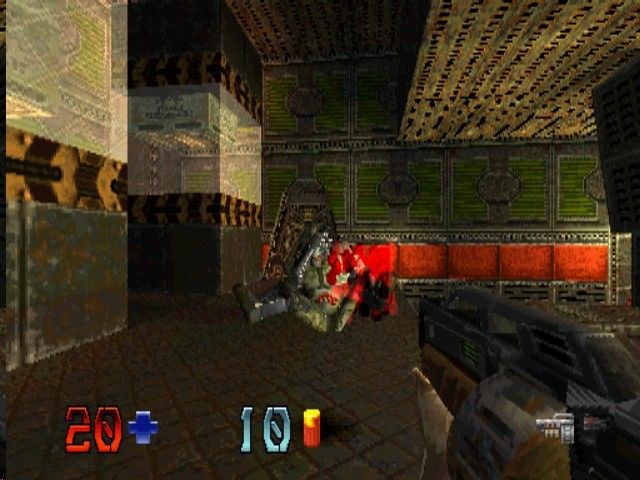
Even when the first 3D graphics accelerators came out for PC in 1995, they were arguably still somewhat below PlayStation quality...
Battle Arena Toshinden (PlayStation)

Battle Arena Toshinden (PC with NVIDIA NV1)
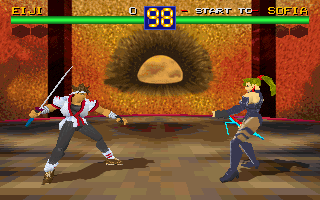
Battle Arena Toshinden (PC with VGA)

It wasn't until 1996, when more powerful PC graphics accelerators came along, like the PowerVR and 3dfx, that the PC well and truly surpassed the PS1 when it came to 3D graphical capabilities.
You used a bad port of BA that was meant to run on lower-end PC's as your reason that the PSX was better than the PC??????????????TigerSuperman
Firstly, Battle Arena Toshinden was designed to run on the NVIDIA NV1, which at the time was possibly the best 3D graphics accelerator available for high-end PC's in 1995. In fact, Toshinden was one of the first PC games designed for 3D graphics accelerators. However, it wasn't intended for VGA, hence why the VGA version looks bad compared to the NV1 version (which still doesn't look as good as the PS1 version).
Secondly, I used screenshots of both Quake and Toshinden, highlighting how VGA Quake and NV1 Toshinden were graphically inferior to their PS1 counterparts, Quake II (since there was no original Quake for it) and Battle Arena Toshinden.
And thirdly, I myself used to own a PC with Pentium 166 MHz CPU and VGA graphics around 1996/1997, and I can assure you that it was not at all capable of doing PS1 quality graphics without a 3D graphics accelerator.
[QUOTE="Goldflower1234"]You choose one of the worst looking PS1 games. Why do people constantly think Jrpgs on the PSX=Shows graphical power? Whether it's the best looking game is debatable. You're lying if you're suggesting that it's one of the worst looking, however. Why am I even talking to you? You're just an all around ridiculous person.Because Sony wasted their money with CD technology instead of powerful hardware.
Vagrant Story (probably the best looking game on the system, technically)
Compare this to Duke Nukem
Can can anyone explain me how in god's sake pixelated PS1 textures are "better" than blurry N64 textures?
The lower the resolution, the larger textures are shown by area. In other words, billinear filtering is ESSENTIAL on low resolutions, and so does Edge Anti Aliasing. If not, then you have the graphics as shown on the VG Story pics above. A simply perspective correction is not available, caused (to my knowledge) texture distortion. Moving polygons, caused by the lack of Z buffering. Also polygon flickering, randomly appearing objects, reloading textures and strange stuff where I can't even explain what it is... And ironically, I believe how the simply architecture of the system didn't allowed programmers to push something out of the hardware... At the end result, a technically gap between early and late games wasn't that much. When I look at N64, PS2, XBOX... the graphics on late games are far superior than anything else. On PS1, everything looks like the same, more or less, in my opinion.
TigerSuperman
[QUOTE="nameless12345"]
[QUOTE="Jag85"] Actually, the PS1's 3D graphical capabilities were even better than what high-end PC's could do around 1994-1995. Even the first 3D graphics accelerators for the PC in 1995 weren't any better than the PS1. It wasn't until 1996 that PC graphics accelerators actually surpassed the PS1's 3D graphical capabilities. The only better 3D gaming systems around 1994-1995 were of course only available in the arcades, but as far as home systems went, the PS1 was at the top of its game.
Jag85
I wouldn't really agree with that.
A PC with Pentium CPU and VGA graphics ran circles around the PSX even at release time.
You could run games like Magic Carpet, Descent, Duke Nukem 3D, The Need For Speed, Screamer, ect. in high-res (SVGA) mode.
Quake ran in low-rez but it was still more advanced than any PSX game at the time.
I'd have to disagree. I had a PC with Pentium 166 MHz and VGA graphics, and it didn't come anywhere near the graphical quality of my PlayStation. Without a 3D accelerator, a PC back then was well below PlayStation quality...
A pre-Voodoo PC could run games like these:

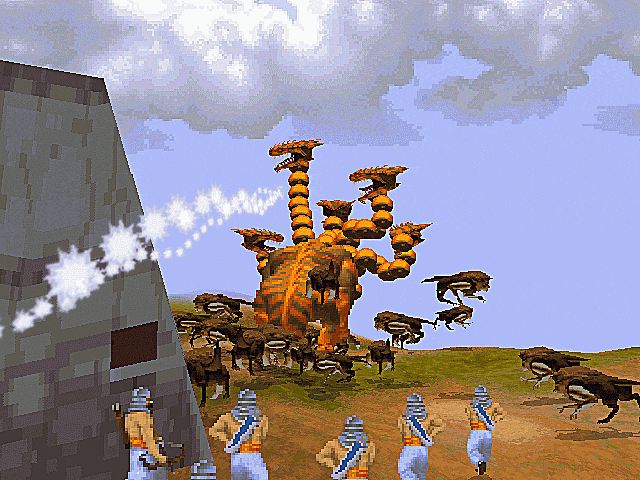

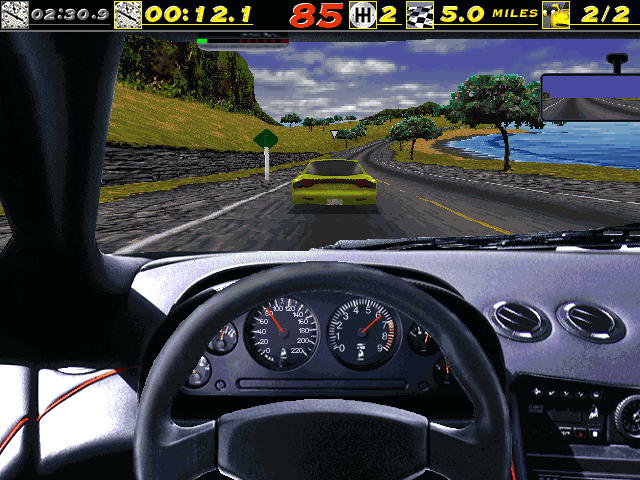



And these aren't bullshots either as the games actually looked like that (high-res or SVGA) if you had a Pentium PC with a video card with a decent amount of V-RAM (atleast 2 MB V-RAM) while PSX could only do low-res graphics.
A Pentium 166 with MMX could already run Unreal in software mode and that looked better than Quake II on PSX. (which looked like a more colorful version of the PC software version)
I've also heard that PSX was actually incapable of running the first Quake and that's why it was made only for N64. (& Saturn, whose version runs on a different engine)
QII was deff. impressive for PSX but it's still leagues bellow the 3D accelerated PC version and has reduced weapon and enemy models even in comparison to software PC version. (better lighting tho)
The Nvidia NV1 was trash, btw.
Even the S3 Virge was better than it.
Not exactly a glorious start for Nvidia.
No, this is about right. I am a scientist, I should know.By the way, here's how PSX and N64 graphics compare:
PSX
N64
j/k... :P
nameless12345
And these aren't bullshots either as the games actually looked like that (high-res or SVGA) if you had a Pentium PC with a video card with a decent amount of V-RAM (atleast 2 MB V-RAM) while PSX could only do low-res graphics.
A Pentium 166 with MMX could already run Unreal in software mode and that looked better than Quake II on PSX. (which looked like a more colorful version of the PC software version)
I've also heard that PSX was actually incapable of running the first Quake and that's why it was made only for N64. (& Saturn, whose version runs on a different engine)
QII was deff. impressive for PSX but it's still leagues bellow the 3D accelerated PC version and has reduced weapon and enemy models even in comparison to software PC version. (better lighting tho)
The Nvidia NV1 was trash, btw.
Even the S3 Virge was better than it.
Not exactly a glorious start for Nvidia.
nameless12345
Do you have the names of those games and their release dates? Also, do you know which ones used 3D accelerators and which ones didn't?
The Pentium MMX line was introduced in late 1996, so that doesn't necessarily contradict what I said before about the PS1's 3D graphics being superior to the PC's 1994-1995 era 3D graphics.
While the PS1 definitely cannot handle GL Quake, I don't see any reason it cannot handle VGA Quake, since, as you can see from the screenshots above, Quake II on the PS1 clearly looks superior to VGA Quake.
And I agree Quake II on the PS1 is leagues below the 3D accelerated PC version, but that is precisely my point: You needed a 3D accelerator to have graphics like that on a PC. Software rendering PS1 quality 3D graphics would have been too intensive for a pre-MMX Pentium CPU without hardware 3D acceleration.
From what I've seen, I'd say the NVIDIA NV1 and S3 Virge were more or less comparable in power, but neither of them seemed to have had better 3D capabilities than the PS1. Not a glorious start, but considering how these were some of the very first 3D accelerators for the PC in 1995, it's not a bad start at all. My point is that it was in 1996 when we really started to see the PC overtaking consoles when it came to 3D graphics.
I would say 3DO has comparable 3d graphics to PSX during 1994-1995 time frame.NationProtectorI'd say the 3DO was more comparable to the Saturn when it came to 3D graphics, though I'd give the edge to the Saturn in this case. The PS1 had better 3D graphical capabilities than both of them though.
[QUOTE="NationProtector"]I would say 3DO has comparable 3d graphics to PSX during 1994-1995 time frame.Jag85I'd say the 3DO was more comparable to the Saturn when it came to 3D graphics, though I'd give the edge to the Saturn in this case. The PS1 had better 3D graphical capabilities than both of them though. In 1995? I think they are quite close: Playstation
 3DO Interactive Multiplayer
3DO Interactive Multiplayer 
[QUOTE="nameless12345"]
And these aren't bullshots either as the games actually looked like that (high-res or SVGA) if you had a Pentium PC with a video card with a decent amount of V-RAM (atleast 2 MB V-RAM) while PSX could only do low-res graphics.
A Pentium 166 with MMX could already run Unreal in software mode and that looked better than Quake II on PSX. (which looked like a more colorful version of the PC software version)
I've also heard that PSX was actually incapable of running the first Quake and that's why it was made only for N64. (& Saturn, whose version runs on a different engine)
QII was deff. impressive for PSX but it's still leagues bellow the 3D accelerated PC version and has reduced weapon and enemy models even in comparison to software PC version. (better lighting tho)
The Nvidia NV1 was trash, btw.
Even the S3 Virge was better than it.
Not exactly a glorious start for Nvidia.
Jag85
Do you have the names of those games and their release dates? Also, do you know which ones used 3D accelerators and which ones didn't?
The games are:
Flight Unlimited (1995, software/direct draw), Magic Carpet (1994, software/DD), Screamer (1995, software/DD), The Need For Speed (1995, software/DD), The Terminator: Future Shock/SkyNET (1995/1996, software/DD), Descent II (1996, software/DD; supports hardware 3D via Direct 3D, Glide, S3 Metal, Power VR, ect.), Witchaven II (1996, software/DD).
I may be a bit inaccurate in supported render modes tho.
Quake 1 had more complex architecture than Quake II had and some other things.
I could see a tonned-down verison of Quake 1 running on PSX but at the time, there was said that PSX could not handle it properly.
The Quake II port for PSX was impressive but there had to be several cuts made in order for it to run on it.
Unreal was also supposed to be ported to PSX (& 64DD) but this version was canned.
[QUOTE="NationProtector"]I would say 3DO has comparable 3d graphics to PSX during 1994-1995 time frame.Jag85I'd say the 3DO was more comparable to the Saturn when it came to 3D graphics, though I'd give the edge to the Saturn in this case. The PS1 had better 3D graphical capabilities than both of them though.
3DO was the weakest of the three but it had an interesting feature called "interpolation" which made the picture of 3D games more "smooth", a little like N64's texture filtering.
It also had the best console version of The Need For Speed and Road Rash.
[QUOTE="Jag85"]
[QUOTE="nameless12345"]
And these aren't bullshots either as the games actually looked like that (high-res or SVGA) if you had a Pentium PC with a video card with a decent amount of V-RAM (atleast 2 MB V-RAM) while PSX could only do low-res graphics.
A Pentium 166 with MMX could already run Unreal in software mode and that looked better than Quake II on PSX. (which looked like a more colorful version of the PC software version)
I've also heard that PSX was actually incapable of running the first Quake and that's why it was made only for N64. (& Saturn, whose version runs on a different engine)
QII was deff. impressive for PSX but it's still leagues bellow the 3D accelerated PC version and has reduced weapon and enemy models even in comparison to software PC version. (better lighting tho)
The Nvidia NV1 was trash, btw.
Even the S3 Virge was better than it.
Not exactly a glorious start for Nvidia.
nameless12345
Do you have the names of those games and their release dates? Also, do you know which ones used 3D accelerators and which ones didn't?
The games are:
Flight Unlimited (1995, software/direct draw), Magic Carpet (1994, software/DD), Screamer (1995, software/DD), The Need For Speed (1995, software/DD), The Terminator: Future Shock/SkyNET (1995/1996, software/DD), Descent II (1996, software/DD; supports hardware 3D via Direct 3D, Glide, S3 Metal, Power VR, ect.), Witchaven II (1996, software/DD).
I may be a bit inaccurate in supported render modes tho.
Quake 1 had more complex architecture than Quake II had and some other things.
I could see a tonned-down verison of Quake 1 running on PSX but at the time, there was said that PSX could not handle it properly.
The Quake II port for PSX was impressive but there had to be several cuts made in order for it to run on it.
Unreal was also supposed to be ported to PSX (& 64DD) but this version was canned.
Okay, thanks for that list.
I think we can rule out the 1996 games, since that's not what I was talking about anyway. Generally speaking, I'd say the 1994 games are slightly below PS1 quality 3D. The 1995 games, however, seem more or less comparable to the PS1 in terms of 3D graphics. If they were really software rendered with a Pentium CPU and 2 MB VRAM (though I suspect a few may have had 3D accelerators), then I'm pretty impressed, since I don't remember my un-accelerated Pentium PC doing graphics like that back then. I don't remember how much VRAM I had though, so that might have something to do with it.
If PS1 could handle a decent Quake II port, then I don't see any reason it shouldn't be able to handle a decent Quake port (especially considering how VGA Quake doesn't really look like something the PS1 can't handle). However, the PS1 only had 1 MB VRAM, so I can see how that may have been an issue, since it might require cutting back on some of the assets, regardless of the PS1's GPU capabilities.
Anyway, my point was that the PS1's Geometry Transformation Engine GPU had better 3D capabilities than early 3D accelerators for the PC in 1995. I remember how when it was announced in 1996 that cards like the PowerVR and 3dfx surpassed the 3D capabilities of the PS1, that was considered something of a breakthrough for the PC graphics accelerator market, as if the PS1 was considered a yard-stick for early 3D accelerators.
[QUOTE="nameless12345"]
[QUOTE="Jag85"]
Do you have the names of those games and their release dates? Also, do you know which ones used 3D accelerators and which ones didn't?
Jag85
The games are:
Flight Unlimited (1995, software/direct draw), Magic Carpet (1994, software/DD), Screamer (1995, software/DD), The Need For Speed (1995, software/DD), The Terminator: Future Shock/SkyNET (1995/1996, software/DD), Descent II (1996, software/DD; supports hardware 3D via Direct 3D, Glide, S3 Metal, Power VR, ect.), Witchaven II (1996, software/DD).
I may be a bit inaccurate in supported render modes tho.
Quake 1 had more complex architecture than Quake II had and some other things.
I could see a tonned-down verison of Quake 1 running on PSX but at the time, there was said that PSX could not handle it properly.
The Quake II port for PSX was impressive but there had to be several cuts made in order for it to run on it.
Unreal was also supposed to be ported to PSX (& 64DD) but this version was canned.
Okay, thanks for that list.
I think we can rule out the 1996 games, since that's not what I was talking about anyway. Generally speaking, I'd say the 1994 games are slightly below PS1 quality 3D. The 1995 games, however, seem more or less comparable to the PS1 in terms of 3D graphics. If they were really software rendered with a Pentium CPU and 2 MB VRAM (though I suspect a few may have had 3D accelerators), then I'm pretty impressed, since I don't remember my un-accelerated Pentium PC doing graphics like that back then. I don't remember how much VRAM I had though, so that might have something to do with it.
If PS1 could handle a decent Quake II port, then I don't see any reason it shouldn't be able to handle a decent Quake port (especially considering how VGA Quake doesn't really look like something the PS1 can't handle). However, the PS1 only had 1 MB VRAM, so I can see how that may have been an issue, since it might require cutting back on some of the assets, regardless of the PS1's GPU capabilities.
Anyway, my point was that the PS1's Geometry Transformation Engine GPU had better 3D capabilities than early 3D accelerators for the PC in 1995. I remember how when it was announced in 1996 that cards like the PowerVR and 3dfx surpassed the 3D capabilities of the PS1, that was considered something of a breakthrough for the PC graphics accelerator market, as if the PS1 was considered a yard-stick for early 3D accelerators.
You Forgot about Surge Stinger GPU's, which Simulated Geometry and ran at a high clock speed. It created simulated polygons, and used the rest of the GPU for textures. This was around 1993, and it could stack up graphics with the PSX.[QUOTE="nameless12345"]
[QUOTE="Jag85"]
Do you have the names of those games and their release dates? Also, do you know which ones used 3D accelerators and which ones didn't?
Jag85
The games are:
Flight Unlimited (1995, software/direct draw), Magic Carpet (1994, software/DD), Screamer (1995, software/DD), The Need For Speed (1995, software/DD), The Terminator: Future Shock/SkyNET (1995/1996, software/DD), Descent II (1996, software/DD; supports hardware 3D via Direct 3D, Glide, S3 Metal, Power VR, ect.), Witchaven II (1996, software/DD).
I may be a bit inaccurate in supported render modes tho.
Quake 1 had more complex architecture than Quake II had and some other things.
I could see a tonned-down verison of Quake 1 running on PSX but at the time, there was said that PSX could not handle it properly.
The Quake II port for PSX was impressive but there had to be several cuts made in order for it to run on it.
Unreal was also supposed to be ported to PSX (& 64DD) but this version was canned.
Okay, thanks for that list.
I think we can rule out the 1996 games, since that's not what I was talking about anyway. Generally speaking, I'd say the 1994 games are slightly below PS1 quality 3D. The 1995 games, however, seem more or less comparable to the PS1 in terms of 3D graphics. If they were really software rendered with a Pentium CPU and 2 MB VRAM (though I suspect a few may have had 3D accelerators), then I'm pretty impressed, since I don't remember my un-accelerated Pentium PC doing graphics like that back then. I don't remember how much VRAM I had though, so that might have something to do with it.
If PS1 could handle a decent Quake II port, then I don't see any reason it shouldn't be able to handle a decent Quake port (especially considering how VGA Quake doesn't really look like something the PS1 can't handle). However, the PS1 only had 1 MB VRAM, so I can see how that may have been an issue, since it might require cutting back on some of the assets, regardless of the PS1's GPU capabilities.
Anyway, my point was that the PS1's Geometry Transformation Engine GPU had better 3D capabilities than early 3D accelerators for the PC in 1995. I remember how when it was announced in 1996 that cards like the PowerVR and 3dfx surpassed the 3D capabilities of the PS1, that was considered something of a breakthrough for the PC graphics accelerator market, as if the PS1 was considered a yard-stick for early 3D accelerators.
Wing Commander III was a 1994 game too:




Pretty impressive game for the time with full FMV scenes.
Like I said, a Pentium PC with decent video card could run games in SVGA (640x480) while most PSX games ran in VGA (320x240).
The 3dfx Voodoo only cemented PC's superiority over the PSX.
PSX's "geometry engine" is really just a CPU feature, btw.
PSX's GPU is just for 2D rendering purposes so in a way the PSX is a "software 3D" console. (just a very fast one and with hardware support for things like transparent textures, colored lighting, ect.)
[QUOTE="Jag85"]
[QUOTE="nameless12345"]
The games are:
Flight Unlimited (1995, software/direct draw), Magic Carpet (1994, software/DD), Screamer (1995, software/DD), The Need For Speed (1995, software/DD), The Terminator: Future Shock/SkyNET (1995/1996, software/DD), Descent II (1996, software/DD; supports hardware 3D via Direct 3D, Glide, S3 Metal, Power VR, ect.), Witchaven II (1996, software/DD).
I may be a bit inaccurate in supported render modes tho.
Quake 1 had more complex architecture than Quake II had and some other things.
I could see a tonned-down verison of Quake 1 running on PSX but at the time, there was said that PSX could not handle it properly.
The Quake II port for PSX was impressive but there had to be several cuts made in order for it to run on it.
Unreal was also supposed to be ported to PSX (& 64DD) but this version was canned.
nameless12345
Okay, thanks for that list.
I think we can rule out the 1996 games, since that's not what I was talking about anyway. Generally speaking, I'd say the 1994 games are slightly below PS1 quality 3D. The 1995 games, however, seem more or less comparable to the PS1 in terms of 3D graphics. If they were really software rendered with a Pentium CPU and 2 MB VRAM (though I suspect a few may have had 3D accelerators), then I'm pretty impressed, since I don't remember my un-accelerated Pentium PC doing graphics like that back then. I don't remember how much VRAM I had though, so that might have something to do with it.
If PS1 could handle a decent Quake II port, then I don't see any reason it shouldn't be able to handle a decent Quake port (especially considering how VGA Quake doesn't really look like something the PS1 can't handle). However, the PS1 only had 1 MB VRAM, so I can see how that may have been an issue, since it might require cutting back on some of the assets, regardless of the PS1's GPU capabilities.
Anyway, my point was that the PS1's Geometry Transformation Engine GPU had better 3D capabilities than early 3D accelerators for the PC in 1995. I remember how when it was announced in 1996 that cards like the PowerVR and 3dfx surpassed the 3D capabilities of the PS1, that was considered something of a breakthrough for the PC graphics accelerator market, as if the PS1 was considered a yard-stick for early 3D accelerators.
Wing Commander III was a 1994 game too:




Pretty impressive game for the time with full FMV scenes.
Like I said, a Pentium PC with decent video card could run games in SVGA (640x480) while most PSX games ran in VGA (320x240).
The 3dfx Voodoo only cemented PC's superiority over the PSX.
PSX's "geometry engine" is really just a CPU feature, btw.
PSX's GPU is just for 2D rendering purposes so in a way the PSX is a "software 3D" console. (just a very fast one and with hardware support for things like transparent textures, colored lighting, ect.)
I believe Wing Commander 3 runs better on 3DO though, and has very impressive FMV quality I don't think the N64, Saturn or PSX is even capable of.Pretty impressive game for the time with full FMV scenes.
Like I said, a Pentium PC with decent video card could run games in SVGA (640x480) while most PSX games ran in VGA (320x240).
The 3dfx Voodoo only cemented PC's superiority over the PSX.
PSX's "geometry engine" is really just a CPU feature, btw.
PSX's GPU is just for 2D rendering purposes so in a way the PSX is a "software 3D" console. (just a very fast one and with hardware support for things like transparent textures, colored lighting, ect.)
nameless12345
Yes, but I wasn't talking about things like resolution or FMV, but I was specifically talking about 3D graphical capabilities. When it came to things like the polygons per second, pixels per second, texture transparency, coloured lighting, gouroud shading, 3D frame rate, etc., the PS1 was superior to the PC during 1994-1995. The PC could obviously do higher resolutions, better FMV playback, and other advantages, but when it came to 3D graphical capabilities/performance, that's where the PS1 had the edge. Even for PC games that rivalled PS1 graphics back then, the frame rates were often lower than their PS1 counterparts at the time.
As for the Geometry Transformation Engine, I guess you could call it a kind of CPU/GPU hybrid? Much like the PS2's Emotion Engine, PS3's Cell, and now the PS4's custom AMD APU.
And by the way, just for comparison, here are some of the PlayStation's 3D graphics upon launch in 1994:
Ridge Racer
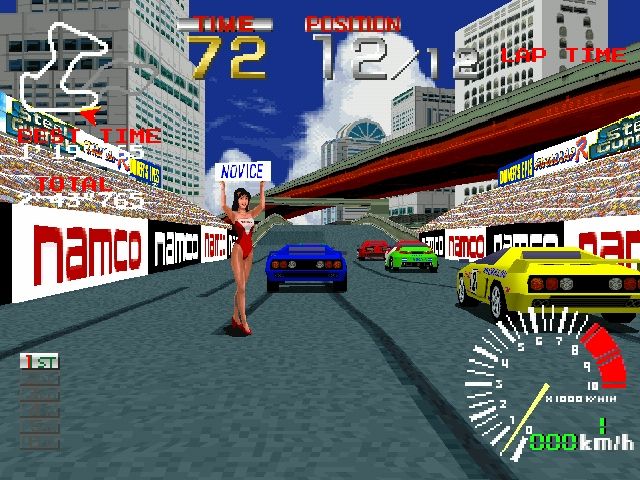
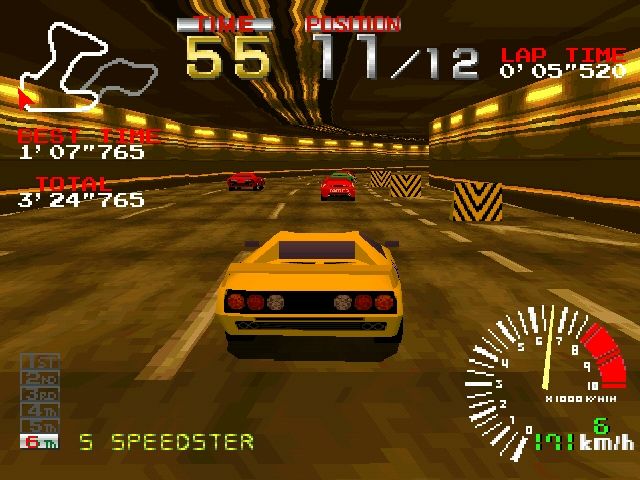
Battle Arena Toshinden


It's also worth noting that these games ran at a consistent 30 fps, whereas PC games of comparable 3D quality in 1995 usually ran at around 15-20 fps.
[QUOTE="nameless12345"]
Pretty impressive game for the time with full FMV scenes.
Like I said, a Pentium PC with decent video card could run games in SVGA (640x480) while most PSX games ran in VGA (320x240).
The 3dfx Voodoo only cemented PC's superiority over the PSX.
PSX's "geometry engine" is really just a CPU feature, btw.
PSX's GPU is just for 2D rendering purposes so in a way the PSX is a "software 3D" console. (just a very fast one and with hardware support for things like transparent textures, colored lighting, ect.)
Jag85
Yes, but I wasn't talking about things like resolution or FMV, but I was specifically talking about 3D graphical capabilities. When it came to things like the polygons per second, pixels per second, texture transparency, coloured lighting, etc., the PS1 was superior to the PC during 1994-1995. The PC could obviously do higher resolutions, better FMV playback, and other advantages, but when it came to 3D graphical capabilities/performance, that's where the PS1 had the edge. Even for PC games that rivalled PS1 graphics at the time, the frame rates were often lower than their PS1 counterparts at the time.
As for the Geometry Transformation Engine, I guess you could call it a kind of CPU/GPU hybrid, much like the PS2's Emotion Engine, PS3's Cell, and now the PS4's custom AMD APU.
And by the way, just for comparison, here are some of the PlayStation's 3D graphics upon launch in 1994:
Ridge Racer


Battle Arena Toshinden



 I will say that the PSX and 3DO graphics did give the PC a run for its money in 94-95. But I also think it'depends on the genre. (3do>>>Ridge Racer.)
I will say that the PSX and 3DO graphics did give the PC a run for its money in 94-95. But I also think it'depends on the genre. (3do>>>Ridge Racer.)
[QUOTE="nameless12345"]
Pretty impressive game for the time with full FMV scenes.
Like I said, a Pentium PC with decent video card could run games in SVGA (640x480) while most PSX games ran in VGA (320x240).
The 3dfx Voodoo only cemented PC's superiority over the PSX.
PSX's "geometry engine" is really just a CPU feature, btw.
PSX's GPU is just for 2D rendering purposes so in a way the PSX is a "software 3D" console. (just a very fast one and with hardware support for things like transparent textures, colored lighting, ect.)
Jag85
Yes, but I wasn't talking about things like resolution or FMV, but I was specifically talking about 3D graphical capabilities. When it came to things like the polygons per second, pixels per second, texture transparency, coloured lighting, 3D frame rate, etc., the PS1 was superior to the PC during 1994-1995. The PC could obviously do higher resolutions, better FMV playback, and other advantages, but when it came to 3D graphical capabilities/performance, that's where the PS1 had the edge. Even for PC games that rivalled PS1 graphics back then, the frame rates were often lower than their PS1 counterparts at the time.
As for the Geometry Transformation Engine, I guess you could call it a kind of CPU/GPU hybrid? Much like the PS2's Emotion Engine, PS3's Cell, and now the PS4's custom AMD APU.
And by the way, just for comparison, here are some of the PlayStation's 3D graphics upon launch in 1994:
Ridge Racer


Battle Arena Toshinden


Screamer (1995, PC exclusive) looked better than Ridge Racer, imo:
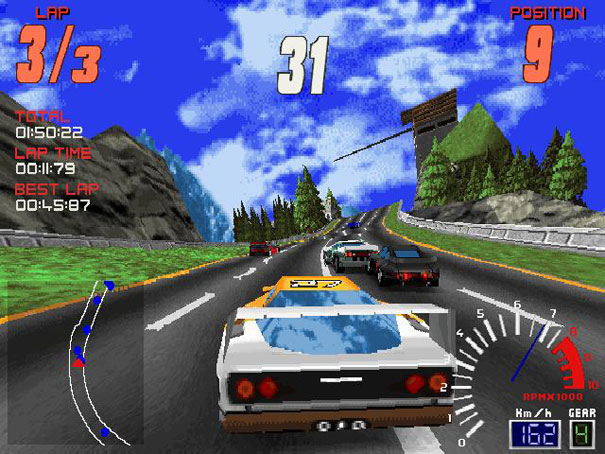
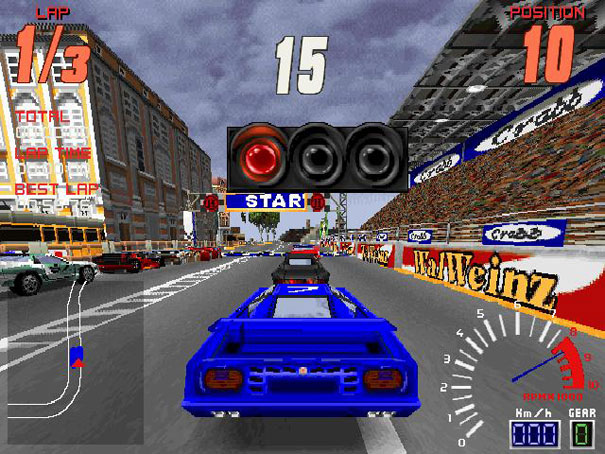


FX Fighter (1995, PC) looked worse than Toshinden, tho:

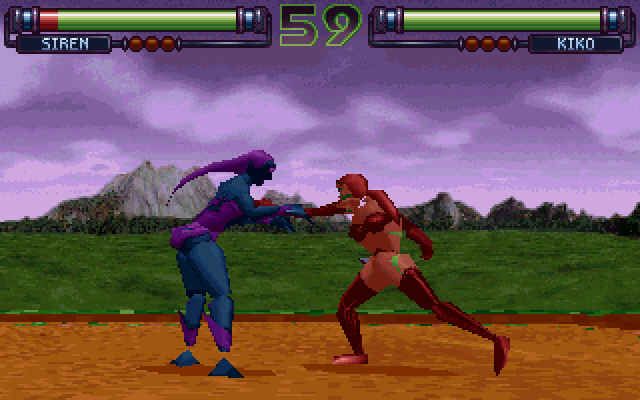
But PC had games like these going for:
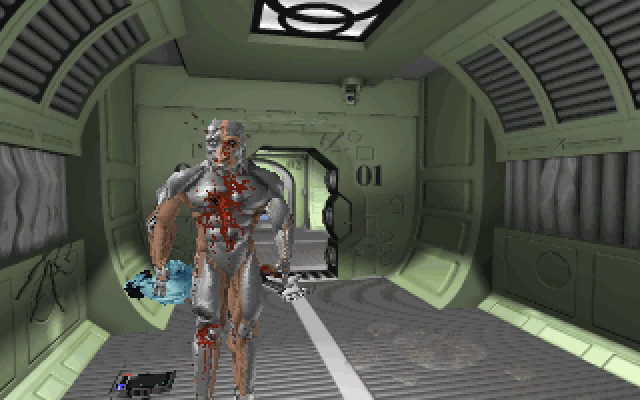
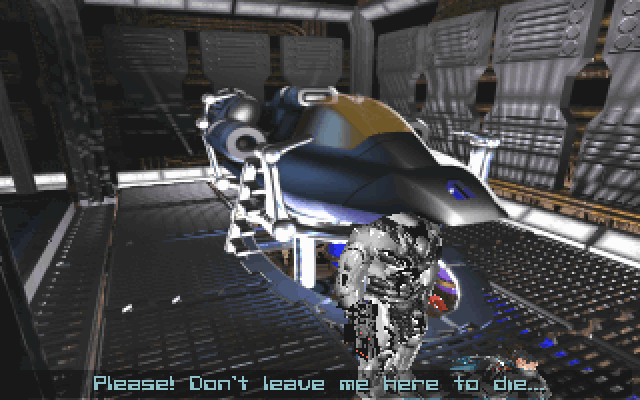
Yes, the PS1 was fast in 3D graphics, I never denied that.
Sony always used the "hybrid" design, like you pointed out.
It's an interesting approach and could be a good thing in some occasions. (for example some effects could just be produced on the CPU if the GPU didn't support it)
[QUOTE="Jag85"]
[QUOTE="nameless12345"]
Pretty impressive game for the time with full FMV scenes.
Like I said, a Pentium PC with decent video card could run games in SVGA (640x480) while most PSX games ran in VGA (320x240).
The 3dfx Voodoo only cemented PC's superiority over the PSX.
PSX's "geometry engine" is really just a CPU feature, btw.
PSX's GPU is just for 2D rendering purposes so in a way the PSX is a "software 3D" console. (just a very fast one and with hardware support for things like transparent textures, colored lighting, ect.)
nameless12345
Yes, but I wasn't talking about things like resolution or FMV, but I was specifically talking about 3D graphical capabilities. When it came to things like the polygons per second, pixels per second, texture transparency, coloured lighting, 3D frame rate, etc., the PS1 was superior to the PC during 1994-1995. The PC could obviously do higher resolutions, better FMV playback, and other advantages, but when it came to 3D graphical capabilities/performance, that's where the PS1 had the edge. Even for PC games that rivalled PS1 graphics back then, the frame rates were often lower than their PS1 counterparts at the time.
As for the Geometry Transformation Engine, I guess you could call it a kind of CPU/GPU hybrid? Much like the PS2's Emotion Engine, PS3's Cell, and now the PS4's custom AMD APU.
And by the way, just for comparison, here are some of the PlayStation's 3D graphics upon launch in 1994:
Ridge Racer


Battle Arena Toshinden


Screamer (1995, PC exclusive) looked better than Ridge Racer, imo:




FX Fighter (1995, PC) looked worse than Toshinden, tho:


But PC had games like these going for:


Yes, the PS1 was fast in 3D graphics, I never denied that.
Sony always used the "hybrid" design, like you pointed out.
It's an interesting approach and could be a good thing in some occasions. (for example some effects could just be produced on the CPU if the GPU didn't support it)
Screamer looks impressive, but it's worth noting that at 640x480 resolution, it had a low frame rate (about ~15 fps), even on a Pentium 133 MHz with 32 MB RAM and Matrox Mystique 220 accelerator card. It would only run at ~30 fps if you lowered the graphical quality and resolution down to 320x200 (lower than PS1 resolution). You can see how it plays here at both settings:
http://youtu.be/aBuGwrWP-s4?t=2m35s
In other words, while the PS1 was clearly limited when it came to resolution (and 2D graphics, for that matter), I think we can agree that its main strength lied in its 3D graphical capabilities and rendering performance.
And yes, Sony does have a habit of always using a CPU/GPU hybrid design with every console they produce. If you think about it, this hybrid approach was more or less a precursor to the modern APU.
Eurofighter 2000 was another impressive 95 PC game:
http://www.youtube.com/watch?v=Pj9CpmTZUqg
http://www.youtube.com/watch?v=KAylVcEJxIw
While the Ace Combat games on the PS could perhaps rival it in graphics, it still was the more complex and demanding game.
You're right that EF2000 does seem more complex and demanding than Ace Combat on the PS1 (though I'd say Ace Combat 3 towards the end of the PS1's life rivals it in demand and complexity), but once again, the problem is that the frame rate is much lower. The Ace Combat games on the PS1 ran at a consistent ~30 fps, whereas EF2000 looks more like it's running at around ~15 fps at best. Compared to a PC of 1995, the PS1 had the edge when it came to 3D rendering performance.Eurofighter 2000 was another impressive 95 PC game:
http://www.youtube.com/watch?v=Pj9CpmTZUqg
http://www.youtube.com/watch?v=KAylVcEJxIw
While the Ace Combat games on the PS could perhaps rival it in graphics, it still was the more complex and demanding game.
nameless12345
[QUOTE="nameless12345"]You're right that EF2000 does seem more complex and demanding than Ace Combat on the PS1 (though I'd say Ace Combat 3 towards the end of the PS1's life rivals it in demand and complexity), but once again, the problem is that the frame rate is much lower. The Ace Combat games on the PS1 ran at a consistent ~30 fps, whereas EF2000 looks more like it's running at around ~15 fps at best. Compared to a PC of 1995, the PS1 had the edge when it came to 3D rendering performance. Not sure about this. There are more reasons that cause low Frame Rates than just 3D rendering.Eurofighter 2000 was another impressive 95 PC game:
http://www.youtube.com/watch?v=Pj9CpmTZUqg
http://www.youtube.com/watch?v=KAylVcEJxIw
While the Ace Combat games on the PS could perhaps rival it in graphics, it still was the more complex and demanding game.
Jag85
[QUOTE="Jag85"][QUOTE="nameless12345"]You're right that EF2000 does seem more complex and demanding than Ace Combat on the PS1 (though I'd say Ace Combat 3 towards the end of the PS1's life rivals it in demand and complexity), but once again, the problem is that the frame rate is much lower. The Ace Combat games on the PS1 ran at a consistent ~30 fps, whereas EF2000 looks more like it's running at around ~15 fps at best. Compared to a PC of 1995, the PS1 had the edge when it came to 3D rendering performance. Not sure about this. There are more reasons that cause low Frame Rates than just 3D rendering. I wasn't implying that was the only reason. Other reasons might also include things like the OS draining some of the resources, the relatively higher resolution, etc. Like with Screamer above, reducing the resolution down to 320x200, below PS1 resolution, might allow it to run nearer to the ~30 fps frame rate of the Ace Combat games. Still, it seems pretty clear to me that the PS1 had the edge over a 1995 PC when it came to 3D rendering performance. It was rare to find an early 3D accelerator for the PC in 1995 that could rival the PS1's polygon rendering performance and other 3D features (S3 Virge and NVIDIA NV1 were probably the closest at the time).Eurofighter 2000 was another impressive 95 PC game:
http://www.youtube.com/watch?v=Pj9CpmTZUqg
http://www.youtube.com/watch?v=KAylVcEJxIw
While the Ace Combat games on the PS could perhaps rival it in graphics, it still was the more complex and demanding game.
Jakandsigz
[QUOTE="nameless12345"]You're right that EF2000 does seem more complex and demanding than Ace Combat on the PS1 (though I'd say Ace Combat 3 towards the end of the PS1's life rivals it in demand and complexity), but once again, the problem is that the frame rate is much lower. The Ace Combat games on the PS1 ran at a consistent ~30 fps, whereas EF2000 looks more like it's running at around ~15 fps at best. Compared to a PC of 1995, the PS1 had the edge when it came to 3D rendering performance.Eurofighter 2000 was another impressive 95 PC game:
http://www.youtube.com/watch?v=Pj9CpmTZUqg
http://www.youtube.com/watch?v=KAylVcEJxIw
While the Ace Combat games on the PS could perhaps rival it in graphics, it still was the more complex and demanding game.
Jag85
The lower framerate is acceptable for simulation-style games because of the slower pace of things.
Low framerate is more an issue for fast, arcade-style games which the Ace Combat series clearly were.
Yes PS had fast 3D performance, but in exchange for image quality.
Things like perspective correction, high-resolution and interpolation were all unknown things to the PS.
Infact were it not the the "geomery engine" extra CPU vector instruction set, the PS would fall behind the 3DO in 3D performance.
I dare say that the Saturn with it's dual 32-bit CPUs and even the Jaguar with it's dual 32/64-bit processors were actually more powerful than the PS was, they just weren't optimized for fast 3D rendering where PS had the edge over them.
You're right that EF2000 does seem more complex and demanding than Ace Combat on the PS1 (though I'd say Ace Combat 3 towards the end of the PS1's life rivals it in demand and complexity), but once again, the problem is that the frame rate is much lower. The Ace Combat games on the PS1 ran at a consistent ~30 fps, whereas EF2000 looks more like it's running at around ~15 fps at best. Compared to a PC of 1995, the PS1 had the edge when it came to 3D rendering performance.[QUOTE="Jag85"][QUOTE="nameless12345"]
Eurofighter 2000 was another impressive 95 PC game:
http://www.youtube.com/watch?v=Pj9CpmTZUqg
http://www.youtube.com/watch?v=KAylVcEJxIw
While the Ace Combat games on the PS could perhaps rival it in graphics, it still was the more complex and demanding game.
nameless12345
The lower framerate is acceptable for simulation-style games because of the slower pace of things.
Low framerate is more an issue for fast, arcade-style games which the Ace Combat series clearly were.
Yes PS had fast 3D performance, but in exchange for image quality.
Things like perspective correction, high-resolution and interpolation were all unknown things to the PS.
Infact were it not the the "geomery engine" extra CPU vector instruction set, the PS would fall behind the 3DO in 3D performance.
I dare say that the Saturn with it's dual 32-bit CPUs and even the Jaguar with it's dual 32/64-bit processors were actually more powerful than the PS was, they just weren't optimized for fast 3D rendering where PS had the edge over them.
The PS1 was actually capable of higher resolutions up to 640x480, but the problem was that it would have to sacrifice the frame rate in order to do so. Most PS1 games always aimed to maintain a consistent 30 fps (or 60 fps when it came to a lot of fighting games), so they rarely pushed the resolution higher in order to maintain the consistent frame rate. If a PS1 game went up to 640x480 resolution, then the speed may have dropped down to ~15 fps, just like with the higher resolution PC games you mentioned.
Well anyway, the Geometry Transformation Engine (GTE) was the reason why the PS1 was a more powerful 3D gaming machine than rival consoles (up until the N64). The CPU's core is clearly weaker than the CPU's in the Saturn and even the Jaguar, but the GTE was a more powerful vector processing unit than either of them (or the 3DO). When it comes to graphics, it's not really the core CPU that matters that much (though it does play an important role), but rather the graphics chips (which are part of the CPU in PS1's case) that really determine just how good the graphics are.
[QUOTE="nameless12345"]
[QUOTE="Jag85"] You're right that EF2000 does seem more complex and demanding than Ace Combat on the PS1 (though I'd say Ace Combat 3 towards the end of the PS1's life rivals it in demand and complexity), but once again, the problem is that the frame rate is much lower. The Ace Combat games on the PS1 ran at a consistent ~30 fps, whereas EF2000 looks more like it's running at around ~15 fps at best. Compared to a PC of 1995, the PS1 had the edge when it came to 3D rendering performance.Jag85
The lower framerate is acceptable for simulation-style games because of the slower pace of things.
Low framerate is more an issue for fast, arcade-style games which the Ace Combat series clearly were.
Yes PS had fast 3D performance, but in exchange for image quality.
Things like perspective correction, high-resolution and interpolation were all unknown things to the PS.
Infact were it not the the "geomery engine" extra CPU vector instruction set, the PS would fall behind the 3DO in 3D performance.
I dare say that the Saturn with it's dual 32-bit CPUs and even the Jaguar with it's dual 32/64-bit processors were actually more powerful than the PS was, they just weren't optimized for fast 3D rendering where PS had the edge over them.
The PS1 was actually capable of higher resolutions up to 640x480, but the problem was that it would have to sacrifice the frame rate in order to do so. Most PS1 games always aimed to maintain a consistent 30 fps (or 60 fps when it came to a lot of fighting games), so they rarely pushed the resolution higher in order to maintain the consistent frame rate. If a PS1 game went up to 640x480 resolution, then the speed may have dropped down to ~15 fps, just like with the higher resolution PC games you mentioned.
Well anyway, the Geometry Transformation Engine (GTE) was the reason why the PS1 was a more powerful 3D gaming machine than rival consoles (up until the N64). The CPU's core is clearly weaker than the CPU's in the Saturn and even the Jaguar, but the GTE was a more powerful vector processing unit than either of them (or the 3DO). When it comes to graphics, it's not really the core CPU that matters that much (though it does play an important role), but rather the graphics chips (which are part of the CPU in PS1's case) that really determine just how good the graphics are.
Having the option for choppy high-res > having no option for high-res at all. ;)
N64's "high-res mode" in some memory pack supported games was a similar deal - looked nicer but ran choppy. ('cept for a few exceptions like Indiana Jones)
Yes the GPU is more important for graphics than the CPU.
What I think, though, is that Jaguar could be competitive to PS1 in 3D graphics would it be designed for it and have a more logical setup. (it had no "proper" CPU and the second GPU was actually the sound chip)
Likewise, the Saturn had theoretically better capabilities than the PS1, it was just hard harnessing it's full power. (like the Shenmue beta shows)
[QUOTE="Jag85"]
[QUOTE="nameless12345"]
The lower framerate is acceptable for simulation-style games because of the slower pace of things.
Low framerate is more an issue for fast, arcade-style games which the Ace Combat series clearly were.
Yes PS had fast 3D performance, but in exchange for image quality.
Things like perspective correction, high-resolution and interpolation were all unknown things to the PS.
Infact were it not the the "geomery engine" extra CPU vector instruction set, the PS would fall behind the 3DO in 3D performance.
I dare say that the Saturn with it's dual 32-bit CPUs and even the Jaguar with it's dual 32/64-bit processors were actually more powerful than the PS was, they just weren't optimized for fast 3D rendering where PS had the edge over them.
nameless12345
The PS1 was actually capable of higher resolutions up to 640x480, but the problem was that it would have to sacrifice the frame rate in order to do so. Most PS1 games always aimed to maintain a consistent 30 fps (or 60 fps when it came to a lot of fighting games), so they rarely pushed the resolution higher in order to maintain the consistent frame rate. If a PS1 game went up to 640x480 resolution, then the speed may have dropped down to ~15 fps, just like with the higher resolution PC games you mentioned.
Well anyway, the Geometry Transformation Engine (GTE) was the reason why the PS1 was a more powerful 3D gaming machine than rival consoles (up until the N64). The CPU's core is clearly weaker than the CPU's in the Saturn and even the Jaguar, but the GTE was a more powerful vector processing unit than either of them (or the 3DO). When it comes to graphics, it's not really the core CPU that matters that much (though it does play an important role), but rather the graphics chips (which are part of the CPU in PS1's case) that really determine just how good the graphics are.
Having the option for choppy high-res > having no option for high-res at all. ;)
N64's "high-res mode" in some memory pack supported games was a similar deal - looked nicer but ran choppy. ('cept for a few exceptions like Indiana Jones)
Yes the GPU is more important for graphics than the CPU.
What I think, though, is that Jaguar could be competitive to PS1 in 3D graphics would it be designed for it and have a more logical setup. (it had no "proper" CPU and the second GPU was actually the sound chip)
Likewise, the Saturn had theoretically better capabilities than the PS1, it was just hard harnessing it's full power. (like the Shenmue beta shows)
I had almost forgotten about that Saturn Shenmue demo...
And yes, the Saturn did have more raw power. When it came to the polygon count, the Saturn could handle slightly more polygons (200,000 / sec) than the PS1 (180,000 / sec).
However, the problem was, like you said before, the PS1's GTE had a superior 3D feature set, which allowed it to perform tasks that significantly reduced the load on the CPU. That's why, in practice, the Saturn often didn't perform as well as the PS1.
However, like that demo shows, it was possible for the Saturn to be more than a match for the PS1, but only with some clever (and very difficult) programming tricks.
As for the Jaguar, its polygon performance (about 30,000 / sec) is significantly lower than the PS1 & Saturn. I'd say the Jaguar's main competitor was the 3DO, which released the same year and had a slightly higher polygon performance (about 50,000 / sec).
Jurrasic Park and Terminator 2 were pre 1994 and still hold up to todays special effects...
WAJ
That's because they were CGI and rendered on render farms.
Real-time 3D is evolving much slower and we're still several years away from CGI quality graphics in video games.
[QUOTE="WAJ"]
Jurrasic Park and Terminator 2 were pre 1994 and still hold up to todays special effects...
nameless12345
That's because they were CGI and rendered on render farms.
Real-time 3D is evolving much slower and we're still several years away from CGI quality graphics in video games.
I'm pretty sure people last gen were saying we'd catch up to CGI quality graphics this gen (and the gen before), but that still hasn't happened yet. I'm not sure we'll ever catch up to it any time in the near future, but the gap is definitely getting smaller and smaller over the years.
Please Log In to post.


Log in to comment